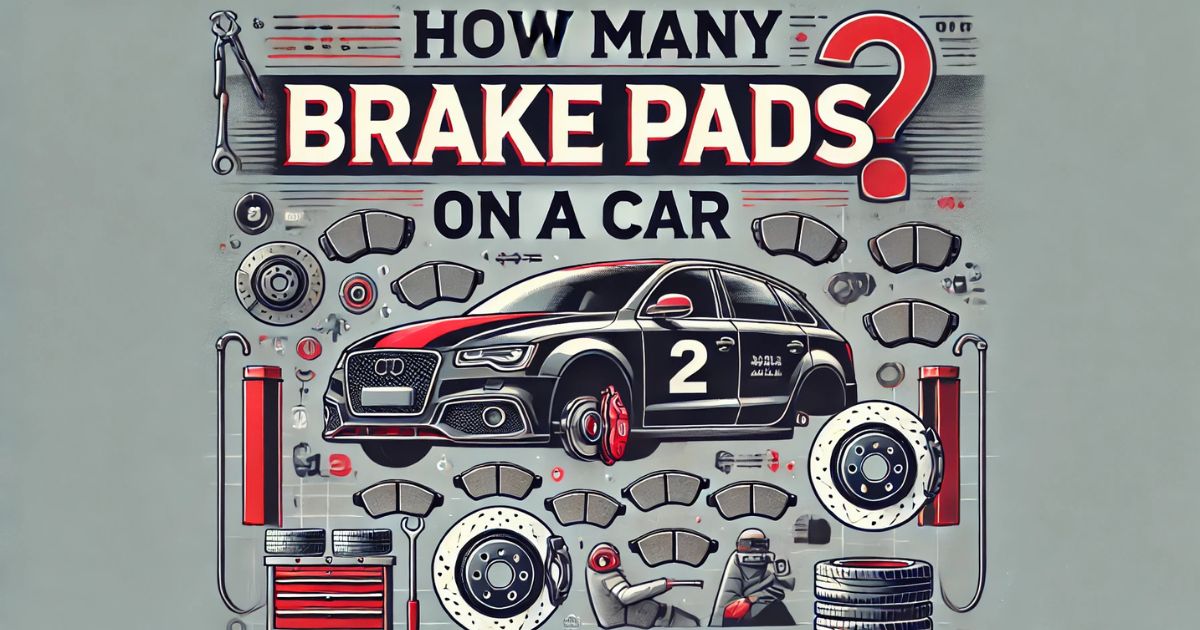Introduction
If you’re doing your own brake maintenance or just trying to understand your car’s brake system better, you might be wondering: how many brake pads on a car? Knowing how many pads your vehicle uses and where they’re located helps you make informed decisions about replacements, costs, and safety. This guide breaks down brake pad setups by vehicle type, axle configuration, and what to expect when servicing your brakes.
How Many Brake Pads on a Car?
Most standard passenger vehicles have eight brake pads total—two on each wheel. Each wheel has a brake caliper that squeezes a pair of pads against a rotor to create friction and stop the car.
Standard Brake Pad Configuration:
- Front left wheel: 2 brake pads
- Front right wheel: 2 brake pads
- Rear left wheel: 2 brake pads
- Rear right wheel: 2 brake pads
Total: 8 brake pads (2 per wheel x 4 wheels)
Are Front and Rear Brake Pads the Same?
No. Front and rear brake pads are usually different in size, shape, and friction material. Front pads tend to be larger because they handle more braking force (typically 60–70%). Rear pads are smaller and may wear slower.
Variations Based on Vehicle Type
Front-Wheel Drive Cars
- Use the front pads more heavily
- Rear brakes may be disc or drum (drum brakes have shoes, not pads)
Rear-Wheel Drive Cars
- May have more balanced wear between front and rear pads
All-Wheel Drive (AWD) and 4WD
- Use a similar disc brake setup on all four wheels
Trucks and SUVs
- Often have heavier-duty pads
- May use larger calipers and rotors for towing or hauling
Performance Cars
- May have multi-piston calipers or upgraded pad materials
- Some use up to six pads per axle with dual-caliper setups
Drum Brakes vs. Disc Brakes
Some vehicles have drum brakes in the rear instead of disc brakes. In that case, they use brake shoes instead of pads.
Common Setup:
- Disc brakes in front (4 pads total)
- Drum brakes in rear (2 shoes per wheel)
- Total braking components: 4 pads + 4 shoes
When to Replace Brake Pads
You should inspect or replace your brake pads when:
- Thickness is below 3mm
- You hear squeaking, grinding, or screeching
- The brake warning light comes on
- You feel vibration or reduced stopping power
How Often Should Brake Pads Be Replaced?
- Front brake pads: every 30,000 to 60,000 miles
- Rear brake pads: every 40,000 to 70,000 miles
- Driving habits and vehicle weight affect wear rate
Brake Pad Replacement Costs
Parts Only:
- Front or rear pads: $30 – $100 per axle
Labor + Parts:
- $150 – $300 per axle
Tip: Always replace brake pads in pairs (both wheels on the same axle).
FAQs
Can I replace just one brake pad?
No. Always replace pads in pairs (left and right on the same axle) to maintain balanced braking.
How many sets of brake pads are in a box?
Most brake pad sets include pads for both wheels of an axle (4 pads total).
Do rear pads last longer?
Yes. Rear pads often wear slower since front brakes do more work.
Are ceramic brake pads better?
Ceramic pads are quieter and last longer but may cost more than semi-metallic pads.
Conclusion
So, how many brake pads on a car? Most cars have eight pads total—two per wheel across four wheels. However, your vehicle may use fewer if it has rear drum brakes or more if it’s a high-performance model. Understanding your car’s specific brake setup is crucial for safe driving, maintenance planning, and budgeting for repairs. Always refer to your owner’s manual or consult a mechanic for exact specifications.
Also Check:
• How Much Does It Cost to Replace Fuel Injectors
• How Many Volts Should a Car Battery Have
• How Long Do Catalytic Converters Last
